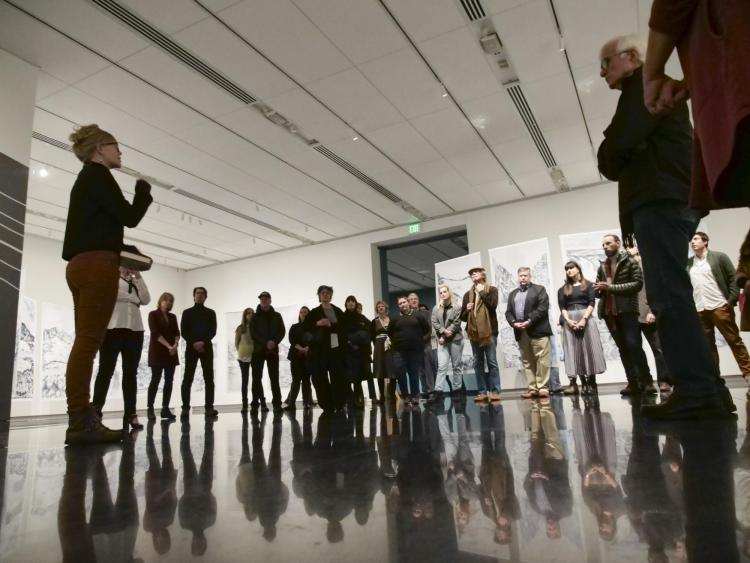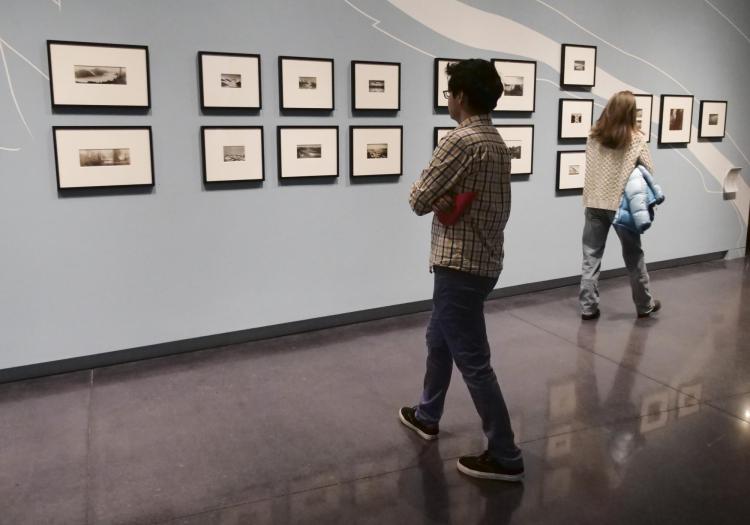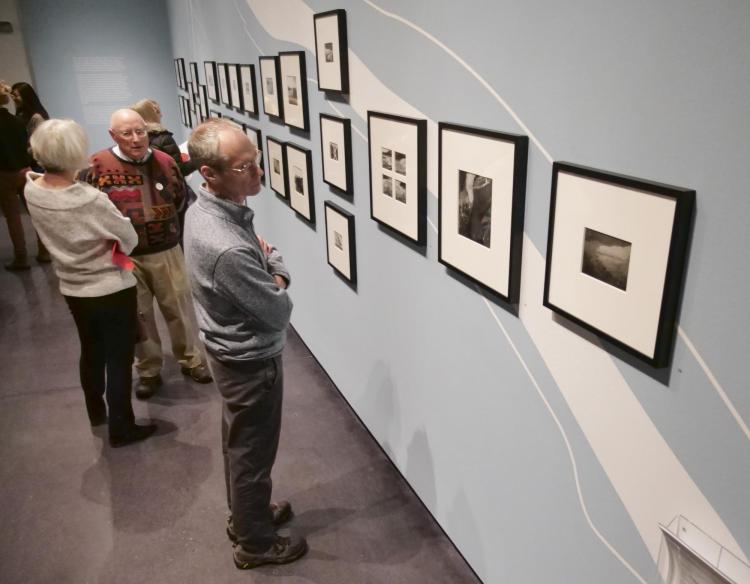Beyond Boulder: Students find fresh ways to promote art exhibit on climate change
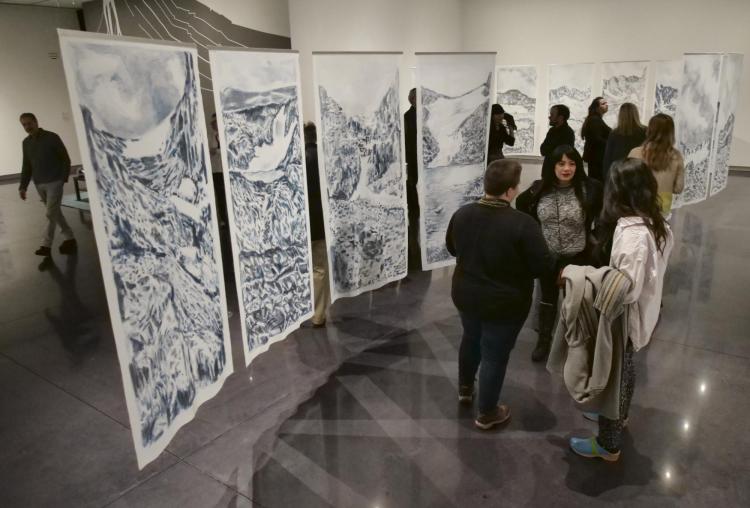
Featured art: Glacier Project, 2019, courtesy artist Trine Bumiller and Robischon Gallery
A new exhibit exploring the space where art and the natural world meet is on view at the CU Art Museum. The exhibit, Documenting Change: Our Climate (Past, Present, Future), showcases 70 artworks from 31 artists.
Open until July 20, the exhibit features diverse materials and spans the historical to the present. Objects range from Renaissance botanical publications, Romantic-era landscape painting, late 19th and early 20th century scientific photographs of glaciers, and contemporary visualizations of complex datasets. Artworks are composed from silver, soot, wood, wool, ink and pixels.
Documenting Change: Our Climate, the Rockies, was the first in this series of exhibits and programs scheduled in 2018–19. This exhibit opened last summer and presents the historical scope of documentary strategies shared by artists and scientists in their studies of climate. In addition to works from the CU Art Museum’s collection, the exhibit features documentary photographs from the archives of the National Snow and Ice Data Center and contemporary artworks with a focus on the Rocky Mountains.
The exhibits and programming are funded, in part, by CU Boulder’s Grand Challenge: Our Space. Our Future.; NEST (Nature, Environment, Science & Technology Studio for the Arts); and the Center for Western Civilization, Thought & Policy.
Attracting student interest
Undergraduate students Dante Dupont and Valerie Foley have been developing activities for students at the museum since the fall semester. Dupont is studying anthropology, with minors in business and Technology, Arts & Media; and Foley is a senior in environmental studies with a minor in atmospheric sciences.
“Dante brings an art background, and Valerie brings her passion and knowledge in environmental studies,” said Traci McDonald, visitor experience liaison at the CU Art Museum. “Her perspective compliments the arts side and has influenced the development of exciting and innovative programming that will help us connect more students with the Documenting Change exhibition.”
Last summer, Foley began looking for a job for the academic year, and a listing from the CU Art Museum caught her eye. The art museum was preparing for the Documenting Change exhibit that opened in February and needed outreach assistance to create student programs for the fall and spring semesters.
Foley worried she wouldn’t be considered for the paid position since she wasn’t an arts major, but her background in STEM disciplines (science, technology, engineering and math) brought her science perspective to the position.
“Having an education in environmental studies gave me background into the material that was being prepared for the exhibit,” she said. “Traci told us about the exhibition and gave us the reins to figure out how to get students involved and engaged in the material.”
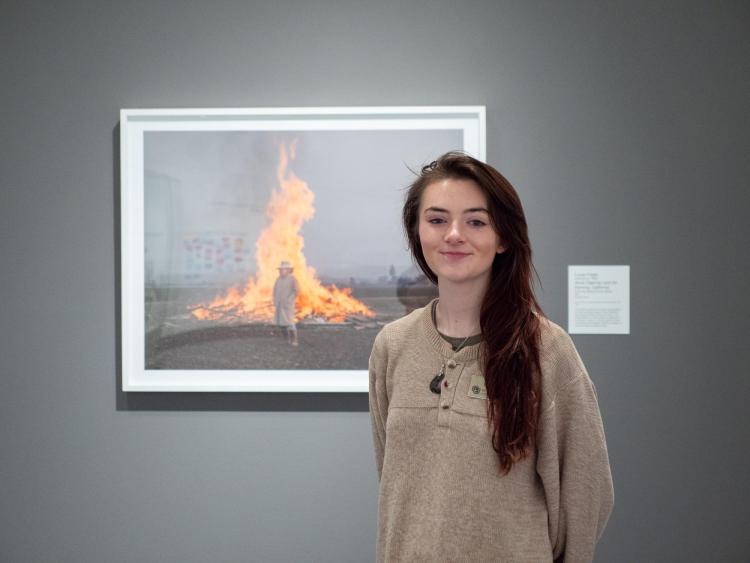
Undergraduate student Valerie Foley
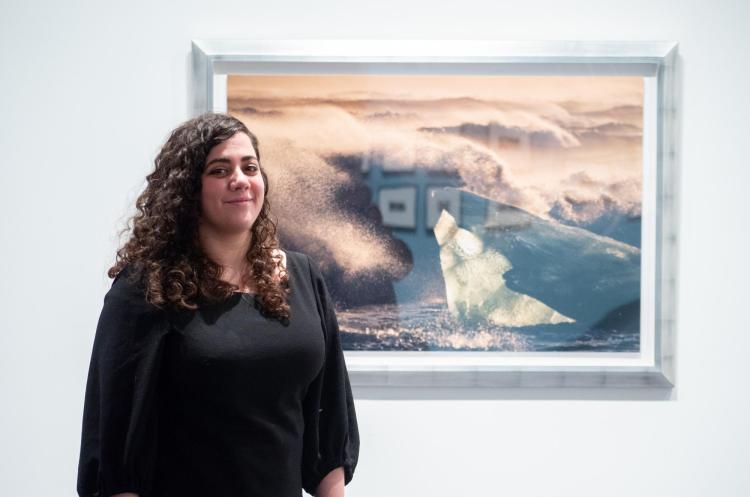
PhD candidate Maya Livio
Considering the many opportunities on campus vying for students’ time and attention, Foley and Dupont developed activities they thought would pique students’ interest.
It’s been a learning experience for them as they planned events and worked out logistics. An excursion to Chautauqua Park for a fall colors photography activity meant also coordinating enough transportation to get everyone there. An event held at Williams Village Residence Halls was inadvertently scheduled during Sorority Rush Week, which meant Dupont and Foley had a hard time connecting with freshmen who were busy with sorority recruitment activities.
“I’ve learned how difficult it can be to get students involved in activities because they have so many options on campus,” she said. “And I’ve realized there are a lot of different audiences to reach on campus and that students want high-quality programs.”
To increase outreach this semester, they’re partnering with other groups on campus, including the Colorado Ocean Coalition (COC) and Students Alliance for Landscape Architecture.
The hands-on programs Foley and Dupont have organized for the spring semester run the gamut from making sun catchers, to drawing botanical pictures, to using pastels and charcoal to make art inspired by landscapes featured in the Documenting Change exhibit. For a complete list of talks and activities, go to CU Art Museum programs.
“We came up with weekend activities and First Thursday events that connect students with the themes and messages we’re trying to convey, which will then connect them with the bigger messages in the Documenting Change exhibit,” she said.
Foley plans to earn a graduate degree in atmospheric sciences or geography, and she’s begun applying for summer internships.
“Developing student activities at the museum this year has expanded my interest from just being in STEM to having more of an interest in the humanities and in policy,” Foley said. “It’s been fun to create art programs that draw on my background, like thinking of sustainable ways to make quality art programs.”
Gathering diverse perspectives
Maya Livio is a PhD candidate in an interdisciplinary program in the College of Media, Communication and Information. Her interest in how technology, science and culture are shaping each other was her entry point into the art museum.
Livio organized the symposium that was held during the opening of the Documenting Change: Our Climate (Past, Present, Future) exhibit. She designed the symposium as a way to bring together people from across campus who have concerns about the environment and to explore whether their individual approaches to the topic intersect.
Faculty, graduate students and alumni who spoke at the symposium shared their research on understanding complex environmental problems. Perspectives presented ran the gamut from environmental scientists, filmmakers, dancers and communications scholars.
“For me, the symposium was about getting people to talk about those challenges head-on and seeing them from different perspectives, where they overlap and where the points of resistance are,” Livio said. “The nitty gritty practicality of doing interdisciplinary work is incredibly challenging because we’re all speaking different languages and referencing different literature, artworks and research methods. It’s thinking about how scholars, scientists and artists all look at and document the environment”



